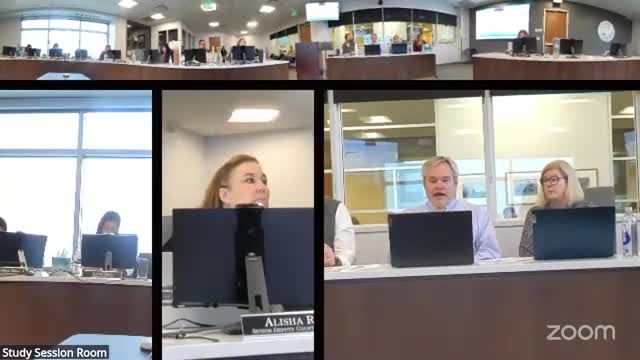Adams County Updates Sustainability Plan with New Greenhouse Gas Reduction Goals
September 24, 2025 | Adams County, Colorado
This article was created by AI summarizing key points discussed. AI makes mistakes, so for full details and context, please refer to the video of the full meeting. Please report any errors so we can fix them. Report an error »

Adams County is taking significant steps to enhance its landscaping regulations, focusing on sustainability and community needs. During the Board of County Commissioners Study Session on September 23, 2025, officials discussed new landscaping guidelines aimed at improving the ecological health of the area while addressing the concerns of local property owners.
One of the most notable changes is the introduction of a structured buffer yard system, which categorizes landscaping requirements into three distinct types. These buffers will be strategically placed between different land uses, around parking lots, and between streets and primary buildings. The new regulations emphasize the use of drought-resistant plants and those that can withstand deer, promoting a program called Waterwise. This initiative encourages the grouping of plants with similar watering needs to optimize irrigation efficiency.
Property owners have expressed frustration over previous requirements that often led to the planting of vegetation that did not survive. The new guidelines aim to alleviate this issue by providing specific recommendations for native and drought-resistant trees and evergreens. Additionally, the regulations will include a maintenance schedule to monitor plant survival rates after one and two years, ensuring that the landscaping becomes established and thrives.
The county is also introducing flexibility in compliance, allowing property owners to adjust their landscaping plans if they cannot meet the strict requirements. This includes options to reduce the amount of planted material or rearrange it while still providing adequate landscaping. However, financial hardship will not be considered a valid reason for non-compliance.
The proposed changes reflect a commitment to creating a more sustainable environment in Adams County while supporting local businesses and property owners. As the county moves forward with these regulations, the focus remains on fostering a community that values both aesthetic appeal and ecological responsibility. The next steps will involve finalizing the plant list and ensuring that the new guidelines are effectively communicated to all stakeholders.
One of the most notable changes is the introduction of a structured buffer yard system, which categorizes landscaping requirements into three distinct types. These buffers will be strategically placed between different land uses, around parking lots, and between streets and primary buildings. The new regulations emphasize the use of drought-resistant plants and those that can withstand deer, promoting a program called Waterwise. This initiative encourages the grouping of plants with similar watering needs to optimize irrigation efficiency.
Property owners have expressed frustration over previous requirements that often led to the planting of vegetation that did not survive. The new guidelines aim to alleviate this issue by providing specific recommendations for native and drought-resistant trees and evergreens. Additionally, the regulations will include a maintenance schedule to monitor plant survival rates after one and two years, ensuring that the landscaping becomes established and thrives.
The county is also introducing flexibility in compliance, allowing property owners to adjust their landscaping plans if they cannot meet the strict requirements. This includes options to reduce the amount of planted material or rearrange it while still providing adequate landscaping. However, financial hardship will not be considered a valid reason for non-compliance.
The proposed changes reflect a commitment to creating a more sustainable environment in Adams County while supporting local businesses and property owners. As the county moves forward with these regulations, the focus remains on fostering a community that values both aesthetic appeal and ecological responsibility. The next steps will involve finalizing the plant list and ensuring that the new guidelines are effectively communicated to all stakeholders.
View full meeting
This article is based on a recent meeting—watch the full video and explore the complete transcript for deeper insights into the discussion.
View full meeting
